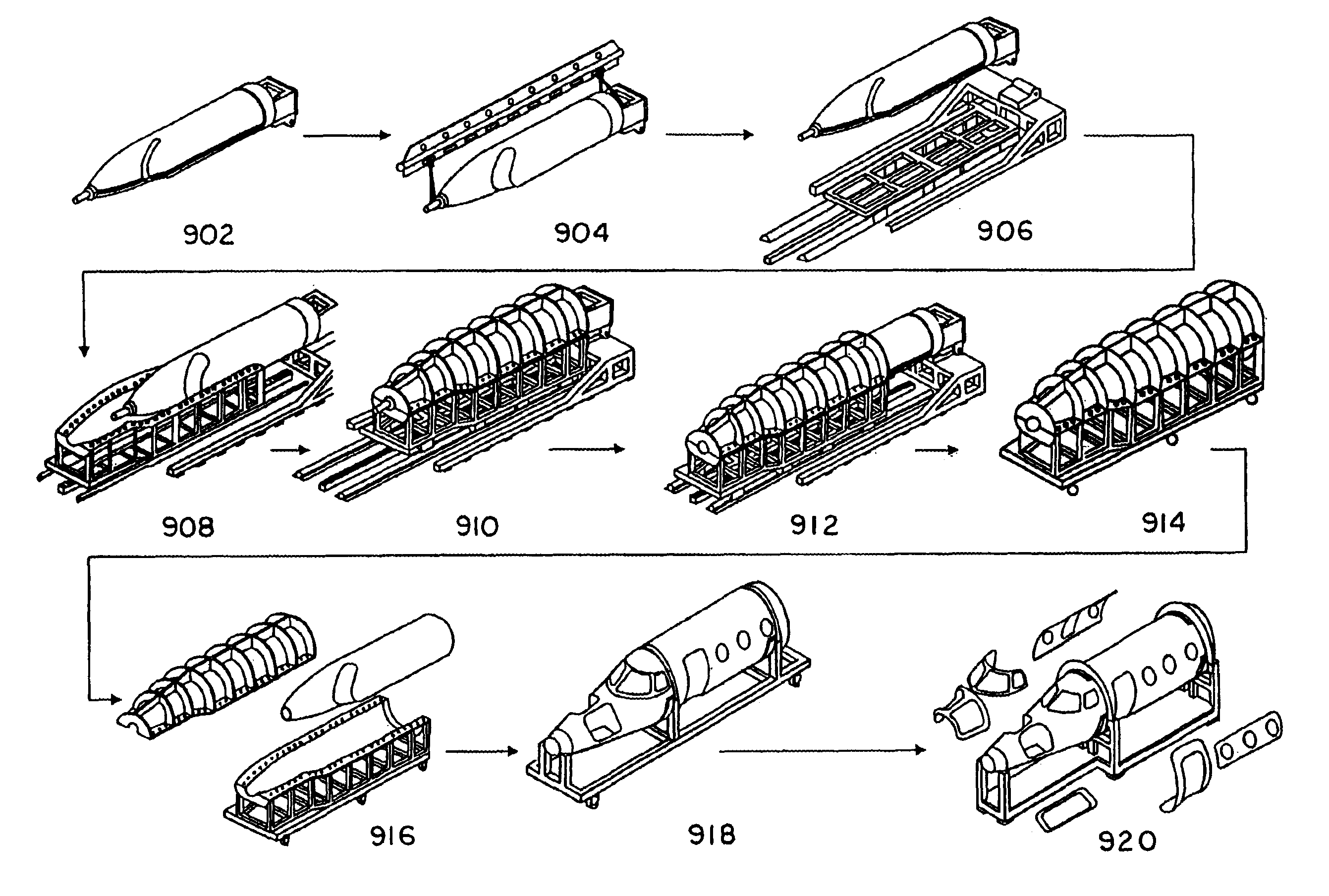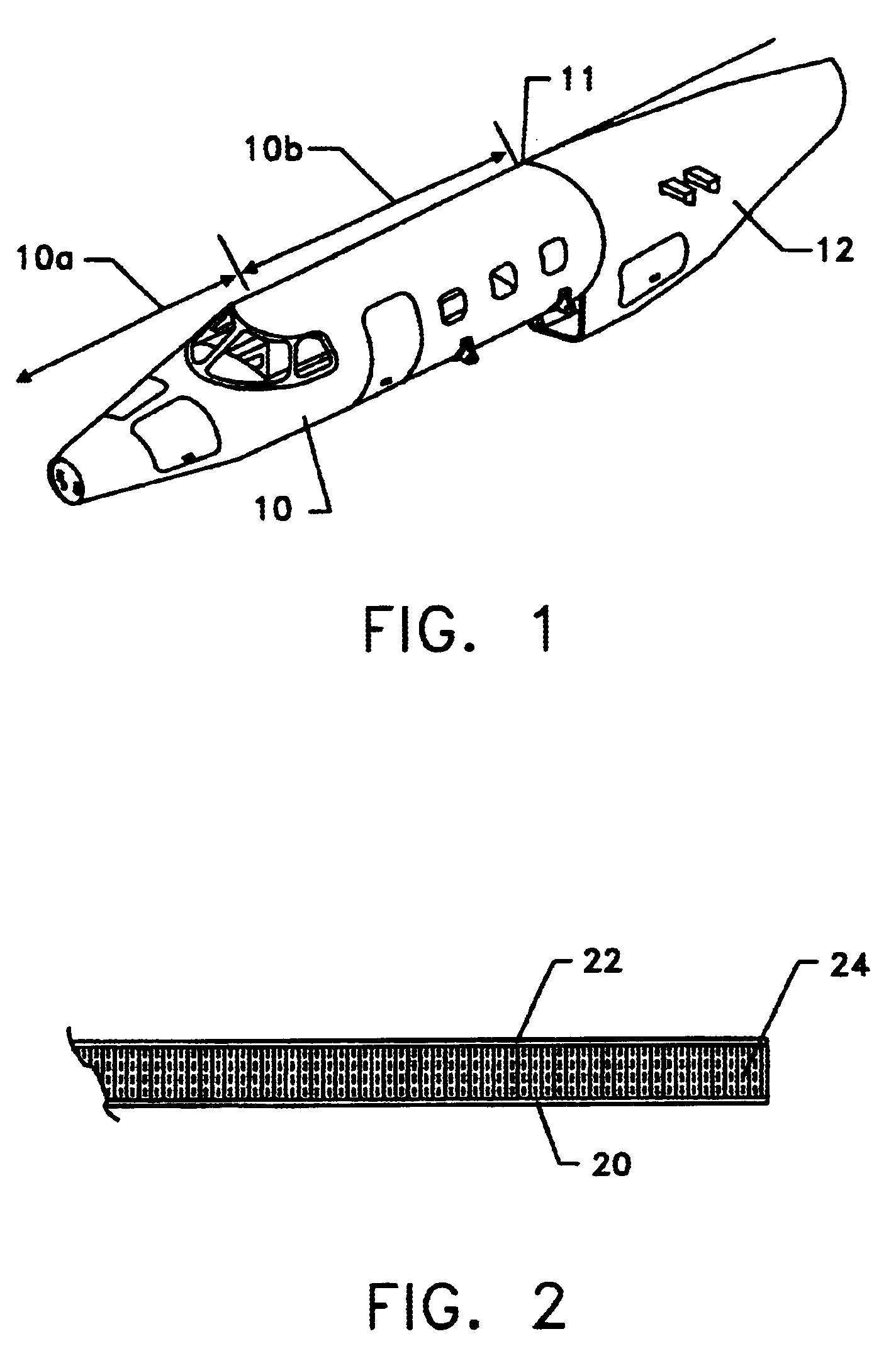Method and apparatus for manufacturing composite structures
a composite material and manufacturing method technology, applied in the field of composite material structure, can solve the problems of increasing cost, adding each joint in the structure, and requiring a substantial amount of time to achieve a uniform and consistent flush join
- Summary
- Abstract
- Description
- Claims
- Application Information
AI Technical Summary
Benefits of technology
Problems solved by technology
Method used
Image
Examples
Embodiment Construction
In embodiments of the disclosed method and apparatus, composite structures having high quality, light weight, and low fabrication costs are possible. These characteristics are achieved by, among other things, providing a single piece full cylinder composite structure design having no axial joints, composite shell outer surfaces which are tooled to the outer mold line, and relatively large composite structure components that reduce the number of separate components required for assembly. Furthermore, methods are provided for fabrication of composite structure shells on a tool having an outer surface representing the inside surface of the fabricated structure to achieve minimum labor content.
Various embodiments of the disclosed method and apparatus are directed to structural designs, manufacturing processes, and tooling systems capable of producing composite structures at minimum cost and weight. In a typical embodiment, this disclosure is directed to fabrication of aircraft fuselage ...
PUM
| Property | Measurement | Unit |
|---|---|---|
| diameter | aaaaa | aaaaa |
| length | aaaaa | aaaaa |
| length | aaaaa | aaaaa |
Abstract
Description
Claims
Application Information
 Login to View More
Login to View More - R&D
- Intellectual Property
- Life Sciences
- Materials
- Tech Scout
- Unparalleled Data Quality
- Higher Quality Content
- 60% Fewer Hallucinations
Browse by: Latest US Patents, China's latest patents, Technical Efficacy Thesaurus, Application Domain, Technology Topic, Popular Technical Reports.
© 2025 PatSnap. All rights reserved.Legal|Privacy policy|Modern Slavery Act Transparency Statement|Sitemap|About US| Contact US: help@patsnap.com



